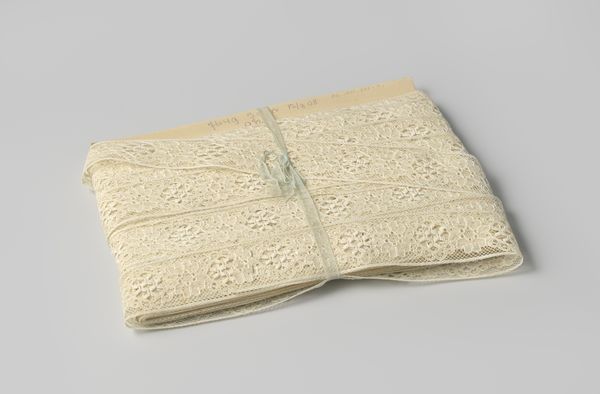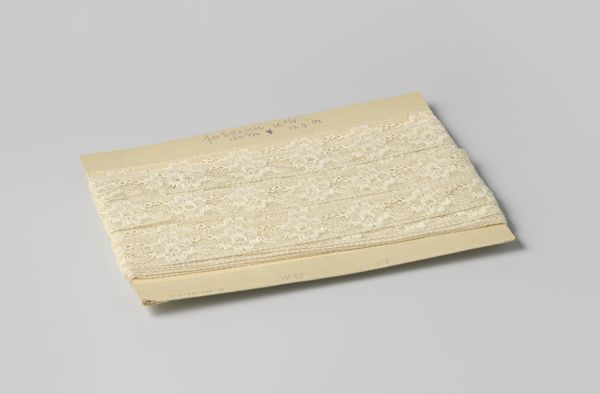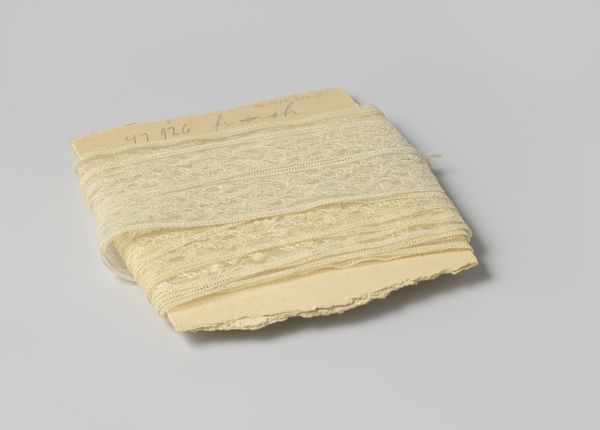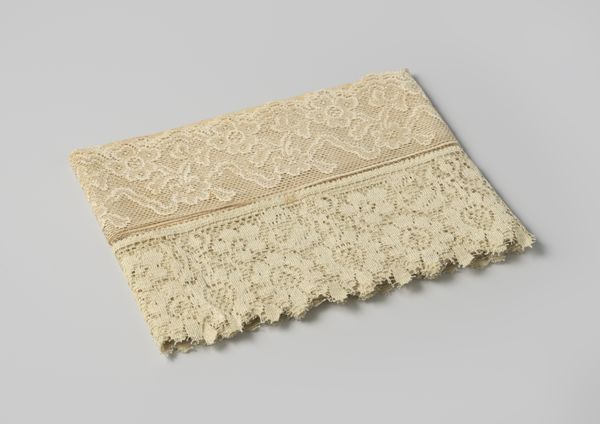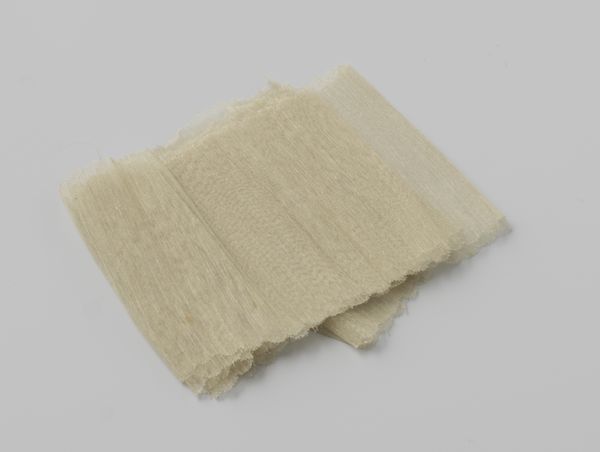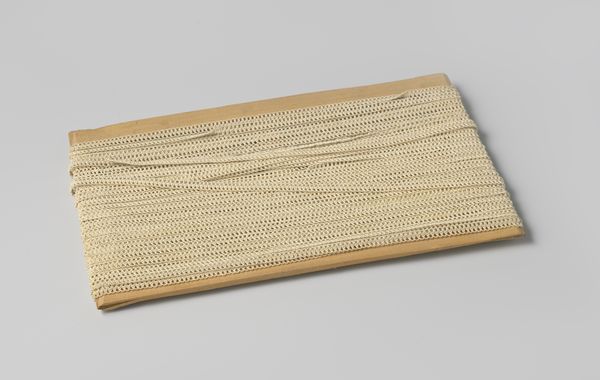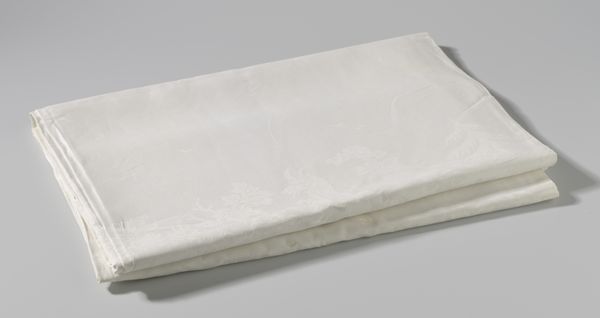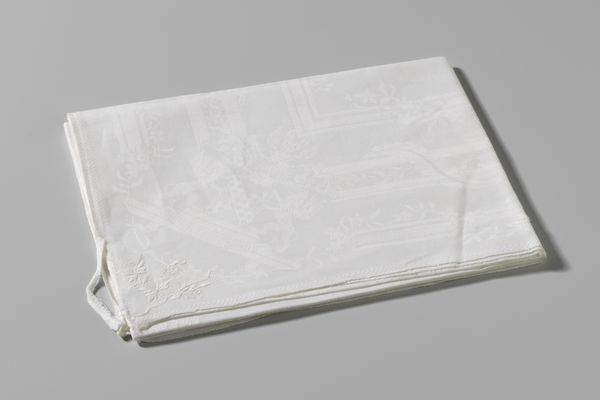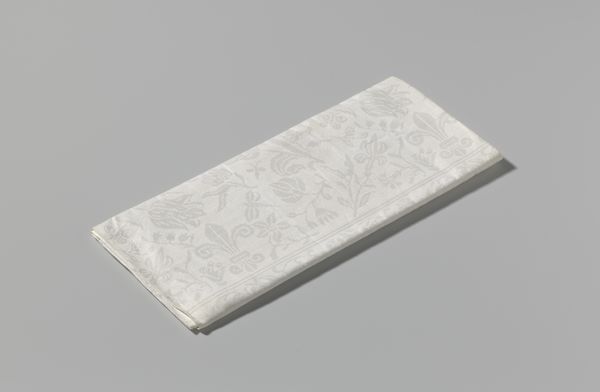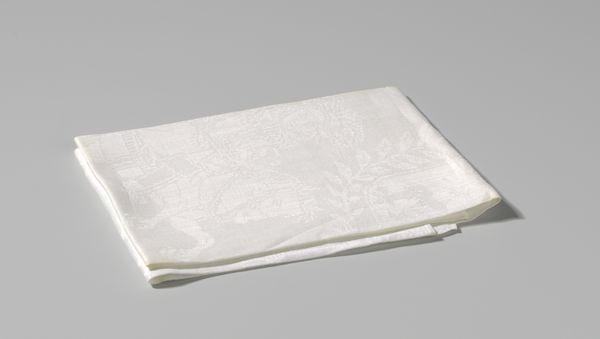
Strook witte machinale kant met bloemen aan één zijde geschulpt, op karton c. 1925
0:00
0:00
mixed-media, textile
#
mixed-media
#
textile
#
decorative-art
Dimensions: width 13.5 cm, length 23.5 cm, width 14.5 cm
Copyright: Rijks Museum: Open Domain
Curator: Oh, this just has such a comforting vibe! It’s delicate but also sort of…substantial. It reminds me of quiet afternoons. Editor: Here we have an exquisite piece of mixed-media art, combining textile and cardboard. It is a strip of white machine-made lace, dating from around 1925. The lace features a floral design and a scalloped edge on one side, and it is mounted on cardboard. You can find this artwork at the Rijksmuseum. Curator: You know, seeing it displayed like this, pressed onto cardboard, makes me think about the labor and industry behind even something this traditionally "feminine." Were these the flapper dresses, maybe? That iconic jazz age silhouette, suddenly made poignant. Editor: Indeed, the early 20th century was a transformative era for women, and the shift toward machine-made lace reflects broader changes in gender roles and labor. Mass production techniques challenged traditional forms of craft, impacting women who relied on hand-made lace for income and social status, so even that lovely floral pattern evokes ambivalence. It also prompts questions around the devaluation of work historically done by women. Curator: I’d not even thought about that aspect, but now seeing it as a reflection of labour practices changes things. This really brings to the surface that idea of ornament versus utility. Is this "merely" decorative, or can we see this little strip of lace as carrying these other traces? Editor: Absolutely. Lace has historically signified luxury, status, and femininity. During the early 20th century, decorative arts, including textiles, were a key part of defining domestic spaces and expressing personal style, yet this very accessibility also created a lot of anxieties and debates around cultural identity. But there's also resistance in those beautiful flowers; the fragility and transience, resisting being merely utilitarian objects. Curator: Wow, suddenly a little strip of lace becomes a lot more loaded. It just looked so simple at first glance. Editor: Precisely, the piece invites us to reflect on intersections of gender, class, and technology. In that respect, even everyday artifacts like lace hold so much significance when seen through the lenses of art history and social theory.
Comments
No comments
Be the first to comment and join the conversation on the ultimate creative platform.
